Shimla Guide: Discover the Charm of the Hills
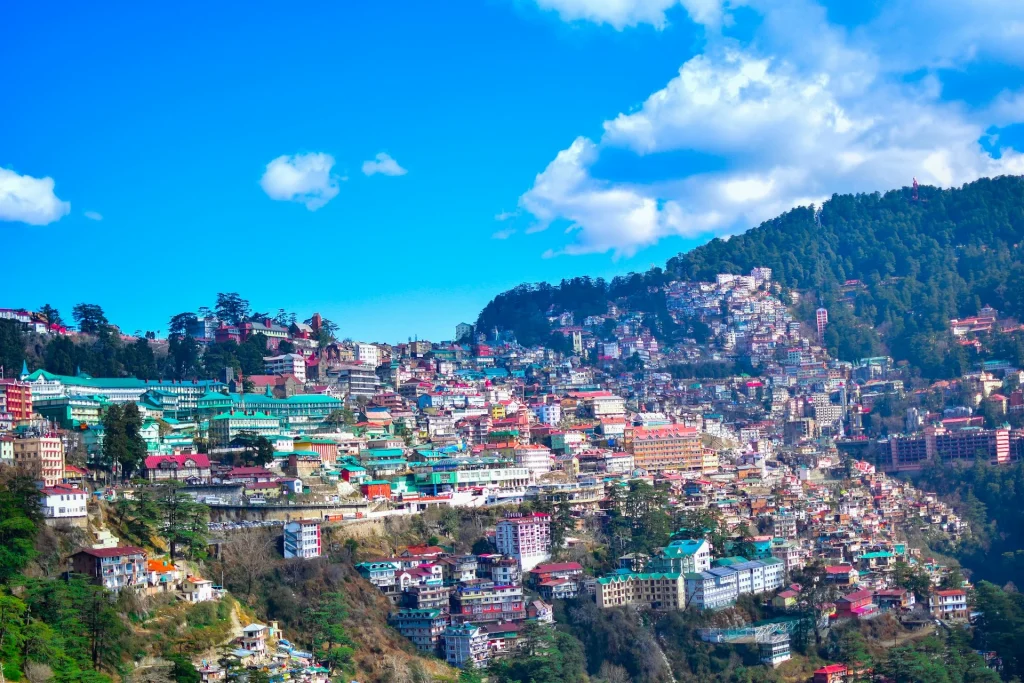
Where the Hills Echo: An Introduction, The Past Picture a place where the air smells like pine trees covered in mist, colonial-era buildings stand as proud reminders of a time long gone, and the majestic Himalayas rise up behind it all. This is Shimla, not a dream. This beautiful hill station was once the summer capital of British India. It still draws travellers in with its unique mix of natural beauty and architectural elegance. This place is more than just a vacation spot; it’s a trip back in time. Shimla is the answer for people who want to get away from the noise of the city and into a world of peaceful scenery and interesting history. This guide is meant to be your best friend as you explore every part of the “Queen of Hills.” We’ll show you around its famous sights, take you on secret trails, let you taste its local foods, and give you all the useful advice you need to plan an amazing trip. The Tarzan Way brings immersive storytelling journeys to life, allowing travellers to safely explore Shimla’s historic lanes and beautiful viewpoints, where every corner has a story and every view is a work of art. Are you ready to be charmed? Let’s go to the heart of Shimla and find out why it has always been so appealing. Key Takeaways: A Historic Getaway: Find out why Shimla was the summer capital of British India and see its beautiful colonial buildings, such as the Viceregal Lodge and Christ Church. Famous Places: Find out about the must-see places, such as The Ridge, Mall Road, and the Jakhoo Temple, which has a huge statue of Lord Hanuman. UNESCO World Heritage: Take a ride on the Kalka-Shimla Toy Train, a historic train ride that gives you stunning views of the Himalayas. Beyond the Town: Kufri is great for adventure sports, Chail is great for its peaceful palace, and Mashobra is great for its peaceful nature trails. Practical Planning: Find out when the best time to go is, how to get to Shimla, where to stay, what to eat, and other important travel tips. Be a responsible traveller: Learn how to travel mindfully in the Himalayas so you can protect its beauty and culture with help from groups like The Tarzan Way. 1. A Look into Shimla’s Royal Past Credit: Unsplash Shimla was once a quiet group of villages before it became a busy tourist spot. In the 1820s, British officers looking for a break from the hot Indian summers found its nice weather and changed their fate. In 1864, it was officially named the British Raj’s summer capital. For the next few decades, the whole government would move here from Calcutta (and later Delhi) for six months each year. Because of this yearly migration, Shimla became a centre of power, glamour, and political intrigue. It was given the nickname “Queen of the Hills.” The beautiful buildings, the carefully planned Mall Road, and the overall layout of the town are all lasting gifts from this time period. Advice for Travellers You can see rare photos and objects from the British Raj at the Shimla Heritage Museum. Hire a local guide to take you on a heritage walk so you can hear interesting stories and anecdotes that aren’t in guidebooks. Read Rudyard Kipling’s “Kim,” which has Shimla in it a lot, to get a sense of what the town was like at that time. Quick Facts Shyamala Devi, the goddess Shyamala, was the name before. Height: About 2,276 metres (7,467 feet). Importance in history: From 1864 to 1947, it was the summer capital of British India. 2. The Ridge and Mall Road are the heart of Shimla Credit: Unsplash A leisurely walk along The Ridge and Mall Road, Shimla’s two most famous streets, is a must for anyone who goes there. In the middle of town, The Ridge is a big open area with amazing, unobstructed views of the snow-capped Himalayan ranges. It is the centre of all cultural activities and is surrounded by important landmarks. Mall Road, a street without cars, is just below The Ridge. It is lined with colonial-style buildings, busy shops, cute cafes, and restaurants. It’s the main shopping street and social centre of Shimla. It’s a great place to go for a walk, look for souvenirs, or just enjoy the lively atmosphere. Tips for Travellers The Ridge has the best views and photo opportunities at sunrise and sunset. It’s a classic Shimla experience to get soft ice cream from the vendors on Mall Road. Wear shoes that are easy to walk in because the road is only for pedestrians. Why It Draws Tourists: Because it’s the best way to experience a hill station. The mix of beautiful mountain views, old buildings, and lively local life makes for a relaxing and energising atmosphere. 3. Amazing buildings from the British period Credit: Unsplash Shimla is a museum of colonial architecture that is still in use. The neo-Gothic, Tudor, and Victorian styles of the buildings here tell stories of a grand past. Christ Church is the second-oldest church in North India and is on The Ridge. You have to see it because of its beautiful stained-glass windows, tall spire, and peaceful atmosphere. At night, when the church is lit up, it looks especially nice. Viceregal Lodge and Botanical Gardens: This used to be the home of the British Viceroy of India. Now it is home to the Indian Institute of Advanced Study. Scottish Baronial architecture is amazing. Take a guided tour of the inside to see the teak-panelled walls and learn about the important decisions that were made there, like the ones that led to the partition of India. Gaiety Theatre: A Victorian theatre on Mall Road that has been beautifully restored. It used to host famous people like Rudyard Kipling. It still hosts a variety of cultural events and plays. Advice for Travellers Because the times for the Viceregal Lodge tour are set, you should check
Women’s Solo Travel: 15 Safety & Empowering Tips
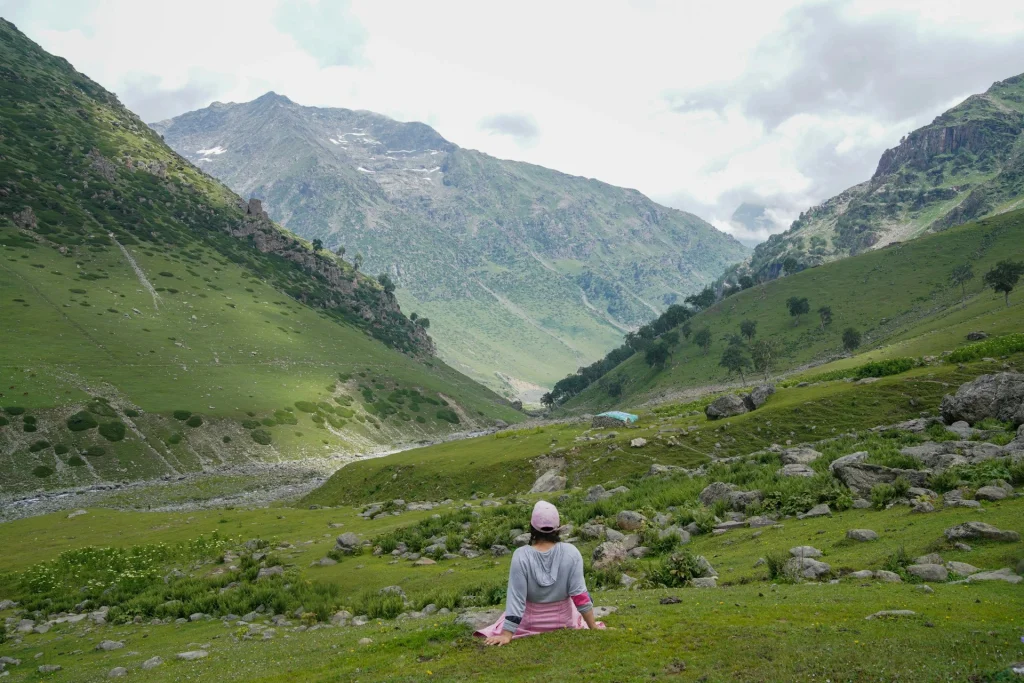
As a woman, deciding to travel alone is one of the most powerful things you can do. It’s a journey of freedom, independence, and finding yourself. Almost two-thirds of travellers today are women, which makes the world easier to get around than ever. But it’s perfectly normal to be a little nervous. It’s normal to have questions like “Is it safe?” or “Can I really do this alone?” when you’re thinking about going to a place as beautiful and complicated as Kashmir. Don’t be afraid! Being prepared doesn’t mean being reckless when you travel alone. If you plan ahead and have the right attitude, you can travel almost anywhere in the world with ease and happiness. You can have the empowering, life-changing experience you’ve always wanted on your own trip. This is the best guide you can find, full of useful tips and tricks to make you feel ready and confident for your trip. We’ll talk about everything from how to pack smartly and stay safe to how to enjoy the amazing freedom of being alone. These tips will help you get the most out of your adventure, no matter how experienced you are. Let’s get going! Part 1: The Foundation—Planning and Getting Ready (Before You Leave) Before you leave, there are a lot of things you need to do to make sure your solo trip goes well. The key to confidence is being well-prepared. 1. Learn how to do research well Credit: pexel.com Knowledge is the most important thing you can have before you go anywhere, especially to a place with a unique culture like Kashmir. Doing research on your destination will help you avoid common mistakes, show respect for the local culture, and learn more about it. What to Look Into: Customs and Culture: Find out about the rules of behaviour, dress codes, and social norms in your area. In many parts of India, for instance, it is polite to eat with your right hand. Neighbourhoods that are safe: Find the best and safest places to stay in each city. Check out the reviews and look at a map to see how central the areas are. Some common scams are: A quick search for “tourist scams in [your destination]” can help you avoid a lot of problems. Know about them so you can spot and stay away from them. What’s going on now: If you’re going to places like Kashmir, it’s important to keep an eye on the news and any travel warnings. Pro Tip: Don’t just use general travel guides. Read new blogs and watch YouTube vlogs by other women who travel alone. Their firsthand accounts and useful tips are very helpful. 2. Make a smart and flexible schedule Credit: pexel.com A plan gives you structure and security, but you need to be able to change it if you need to. What to Plan: Book Your First Night: You should always book your first night in a new city. This takes away the stress of having to find a place to stay after a long trip. Plan out your days: You should have a general idea of what you want to do and see each day, but don’t plan too much. Make sure you have time for unexpected adventures! Getting around: Find out how to get from one place to another. It’s important to book trains in India ahead of time. Pro Tip: Make sure you have both a digital and a paper copy of your itinerary. Give a trusted friend or family member back home the digital version so they know where you are most of the time. 3. Don’t pack too much Credit: pexel.com Packing for a trip alone is a tricky business. You should be ready for a lot of different things, but you also want to be able to carry your bags comfortably by yourself. The Basics: The Right Bag: A rucksack that is comfortable and long-lasting is often easier to carry than a suitcase, especially on bumpy streets or crowded trains. Layered Clothing: Bring clothes you can wear in layers so you can adjust to changing temperatures. A big scarf or sarong is a must-have for any woman travelling alone. You can use it as a head covering when you go to religious sites, as a shawl to cover up, as a beach towel, or as a blanket. A basic first aid kit should have pain relievers, band-aids, antiseptic wipes, and any medications you take. A doorstop for extra security in hotel rooms, a personal safety alarm, and a small padlock are all safety items. Pro Tip: Use packing cubes to keep your bag neat and to squeeze your clothes down. This will save you a lot of room and let you find what you need without having to unpack everything. 4. Organise Your Money and Papers Credit: pexel.com Having a smart money plan and keeping your important papers in order can help you avoid a lot of stress. Papers: You should make at least two copies of your passport, visa, and insurance papers. Put them somewhere else than the originals. Store digital copies in your email and in a safe cloud storage service like Google Drive or Dropbox. Cash: Change things up: Don’t ever depend on just one source of money. Bring both cash and at least two different debit or credit cards. Tell Your Bank: Tell your bank about your travel plans so they don’t block your cards for strange activity. Cash in an emergency: Put some extra cash, like $100 USD, in a separate bag from your main wallet in case of an emergency. Pro Tip: To keep your cash and cards safe, especially in crowded places, use a money belt or a hidden wallet that you can wear under your clothes. 5. Tell people and connect Credit: pexel.com It is important for your peace of mind and the peace of mind of your loved ones back home to stay in touch. What to Do: Tell Others About
8 Best North Goa Hotels with Private Beaches for a Unique

A trip to Goa is magical in its own way, but it can be hard to find a quiet spot on its sunny beaches. North Goa is a popular place for tourists because of its lively atmosphere, well-known markets, and famous nightlife. But what if you want both the thrill of the north and the calm luxury of a private beach? The dream is to leave your room and walk onto a beautiful beach that is only for you. In India, it’s hard to find a truly “private” beach. But a few great hotels offer the next best thing: private, direct access to quiet, secluded parts of North Goa’s famous coastline. These resorts are the perfect place to relax, unwind, and enjoy the sun and sea in peace. Are you looking for the perfect mix of location, luxury, and privacy? We did the work for you. Forget about the long search and reviews that never end. This carefully chosen list includes the best North Goa hotels with private beach access, chosen for every budget and type of traveller. Your perfect beachfront getaway is waiting for you, whether you want a 5-star convention centre or a stylish bungalow by the sea. A Quick Note About Goa’s “Private Beaches” You should know that Indian law says that all beaches are public property. So, no hotel can own a beach. When hotels say they have a “private beach,” they usually mean one of two things: Access to Private: There is a private path from the hotel to a public beach, which is usually a quieter, more private area. Roped-off Area: The hotel has a private area on the beach just for its guests, with sunbeds, umbrellas, and staff to help them. This guide lists hotels that offer this amazing level of exclusive access, so you can have the private beach experience you’ve always wanted. The Best 8 Hotels in North Goa with Their Own Beaches 1. Hotel Hill Rock, Goa Credit: justdial.com Best For: Get Away from It All on a Quiet Hilltop. Location: Near Tiracol River, Querim Hotel Hill Rock is the perfect place to get away from it all if you want real peace and quiet. This beautiful retreat resort is on top of a hill and has stunning views of the Tiracol River and the Arabian Sea. The peaceful and natural setting will help you forget about the stress of living in the city. Why We Love It: The atmosphere is calm and intimate because there are only 18 well-appointed rooms. There are hammocks all over the lush lawns, which are great for a nap in the afternoon with the sound of the ocean in the background. The two beautiful pools are great places to cool off and look out at the ocean. The Beach Experience: The resort has a private beach at the base of the property. It’s a quiet stretch of sand where you can watch the sunset in peace or see a sky full of stars at night. Price Range: ₹2,200 per night 2. The Ivy Anjuna Credit: ivyanjuna.com/gallery-page Best for: A stylish and modern boutique vacation. Anjuna is where it is. The Ivy Anjuna is the best place for a modern traveller who wants style and privacy. This boutique hotel is a stylish oasis in the middle of lively Anjuna. Its sleek, modern design and classy atmosphere make it stand out. It’s great for couples and people travelling alone who want to relax and pamper themselves. Why We Like It: The rooms are beautifully designed, with modern furniture and small touches of traditional Indian style. The property offers a fantastic range of amenities, including a world-class spa for pampering and a well-equipped fitness centre. There are many places to eat on-site, so everyone can find something they like, from local Goan dishes to food from around the world. The Beach Experience: The hotel’s private beach area is the best part. It’s a beautiful, well-kept, and private place where you can get some sun, take in the amazing views, and feel like you’re far away from the crowds in Anjuna. Cost: About ₹6,500 per night 3. Beach Beauty (Beleza By The Beach) Credit: belezagoa.com Best for: A Quiet South Goa Vibe (Honourable Mention) Colva, South Goa We had to give an honourable mention to Beleza By The Beach, even though our main focus is on North Goa. This is because it is often recommended for its amazing private beach experience. Please be aware that this resort is in South Goa. It’s great for people who want to see both parts of Goa. Why We Like It: It’s a private getaway on the quiet, clean sands of Colva Beach. The property has a lovely outdoor pool, spa, and sauna that are perfect for relaxing. Two restaurants on the property serve a wide range of tasty international dishes. The Beach Experience: The hotel has direct access to a clean, private stretch of Colva beach, which is a great place to get away from the same old things. Price Range: ₹8,437 per night 4. Taj Resort & Convention Centre in Goa Credit: www.tajhotels.com Best for: The most luxurious 5-star stays and big events. Where: Vainguinim Beach, close to Panjim. This five-star hotel is a world unto itself, with beautiful architecture and legendary Taj service. As soon as you walk into the fancy lobby, you are surrounded by luxury. The resort is on a cliff, which gives guests stunning views of the Arabian Sea from all sides. Why We Like It: The suites are huge and have beautiful decor, with living rooms that have sparkling chandeliers. The raised deck with the beautiful infinity pool is the best place to see the sunset. The Jiva Spa has treatments that will make you feel better and help you relax after a day of exploring. The Beach Experience: The hotel gives guests direct, private access to the calm and peaceful Vainguinim Beach. It’s a quiet, clean stretch of sand that’s away from the
Best Singapore City Tours with Unique Local Experiences
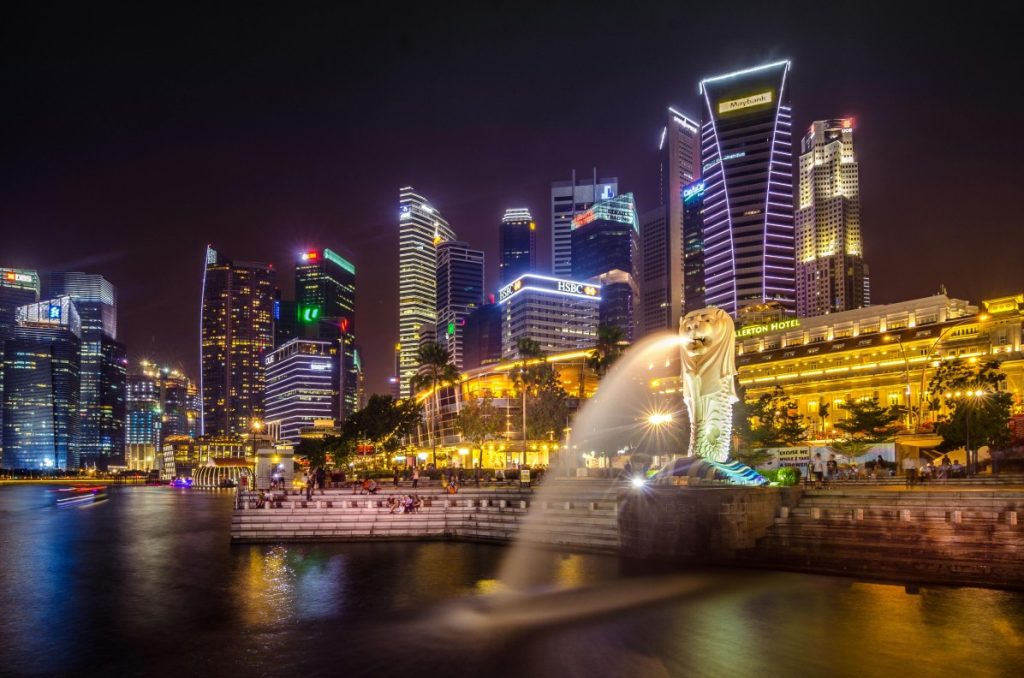
There is more to Singapore than Marina Bay Sands or Gardens by the Bay; it is a blend of culture, history, cuisine, and little-known narratives. The best way to delve into the city is to walk its streets, explore its neighborhoods, and participate in urban walks and city tours. The Tarzan Way offers curated experiences for first-time visitors that juxtapose well-known attractions with authentic interactions with the locals. Why City Tours Matter City tours are bridges to culture, history, and community. Benefits: Discover hidden gems not in guidebooks Save time with guided routes Interact with locals, taste authentic food, attend festivals Ideal for solo travelers, couples, and families who are looking to immerse themselves in Singapore vacation experiences. Types of City Tours 1. Heritage & Cultural Tours Explore Chinatown, Little India, Kampong Glam. Learn stories behind temples, markets, and family-run shops. Experience traditional food, art, and festivals. Pro Tip: Wear comfortable shoes; carry water. 2. Nature & Urban Green Tours Visit Gardens by the Bay, Singapore Botanic Gardens, Southern Ridges. Enjoy walking, hiking, panoramic views, and seasonal light festivals. Pro Tip: Bring a camera, sunscreen, and enjoy family-friendly spots. 3. Night Tours & Light Experiences Discover the city after dark: Marina Bay light show, Clarke Quay nightlife, Jewel Changi waterfall. Great for couples, photographers, and evening relaxation. 4. Culinary & Street Food Tours Must-visit hawker centers: Maxwell Food Centre, Old Airport Road, Lau Pa Sat. Sample iconic dishes like chicken rice, laksa, satay, and desserts. Pro Tip: Carry small bills, eat what locals eat, and ask about family recipes. 5. Offbeat & Thematic Experiences Hidden gems like Tiong Bahru murals, Pulau Ubin cycling, workshops (batik, Peranakan cooking). Ideal for travelers seeking authentic, local stories and hands-on experiences. Suggested Singapore 5-Day Itinerary Day 1: Marina Bay, Gardens by the Bay, river cruise Day 2: Chinatown & Little India heritage tours Day 3: Sentosa Island, Universal Studios/S.E.A. Aquarium Day 4: ArtScience Museum, Tiong Bahru cafés, Orchard Road shopping Day 5: Botanic Gardens, local cafés, Jewel Changi waterfall Pro Tip: Start early, plan around MRT routes, carry water and a camera. Best Time to Visit Jan–Mar: Pleasant, ideal for sightseeing Apr–Jun: Hot and humid; indoor attractions recommended Jul–Sep: Festival season, cultural immersion Oct–Dec: Occasional rain; Christmas lights and markets Planning around festivals enhances your Singapore trip guide experience. Where to Stay Bugis: Central, lively, MRT access Chinatown: Budget-friendly, culture-rich Clarke Quay: Nightlife and riverside dining Little India: Colorful heritage vibe Pro Tip: Stay near MRT lines for easy access to attractions. Special Experiences Romantic: Sunset cruises, rooftop dinners, spa retreats Family-Friendly: Sentosa, Night Safari, Singapore Flyer Solo Travel: Pulau Ubin cycling, hawker tours, cultural workshops Travel Tips Transport: MRT, buses; EZ-Link card recommended Apps: Grab, Google Maps for easy navigation Safety: Singapore is extremely safe Currency: SGD; small bills for hawkers Etiquette: Respect temples, avoid littering, follow local rules Shopping & Souvenirs Bugis Street: Fashion, souvenirs, quirky finds Chinatown: Crafts, snacks, home décor Little India: Textiles, spices, handcrafted items Orchard Road: Luxury and mid-range shopping Conclusion Singapore is a city filled with stories, flavors, and hidden treasures. Travelers can fully immerse themselves in the Singapore experience by participating in city tours, strolling through neighborhoods, sampling delicious street food, and attending festivals. You can visit on your own, as a couple, or with family; there is a way for everyone to create memories, immerse in culture, and enjoy local experiences that are only available in Singapore.
Spiti Valley: The Best Travel Guide to Finding the Right Time to Go
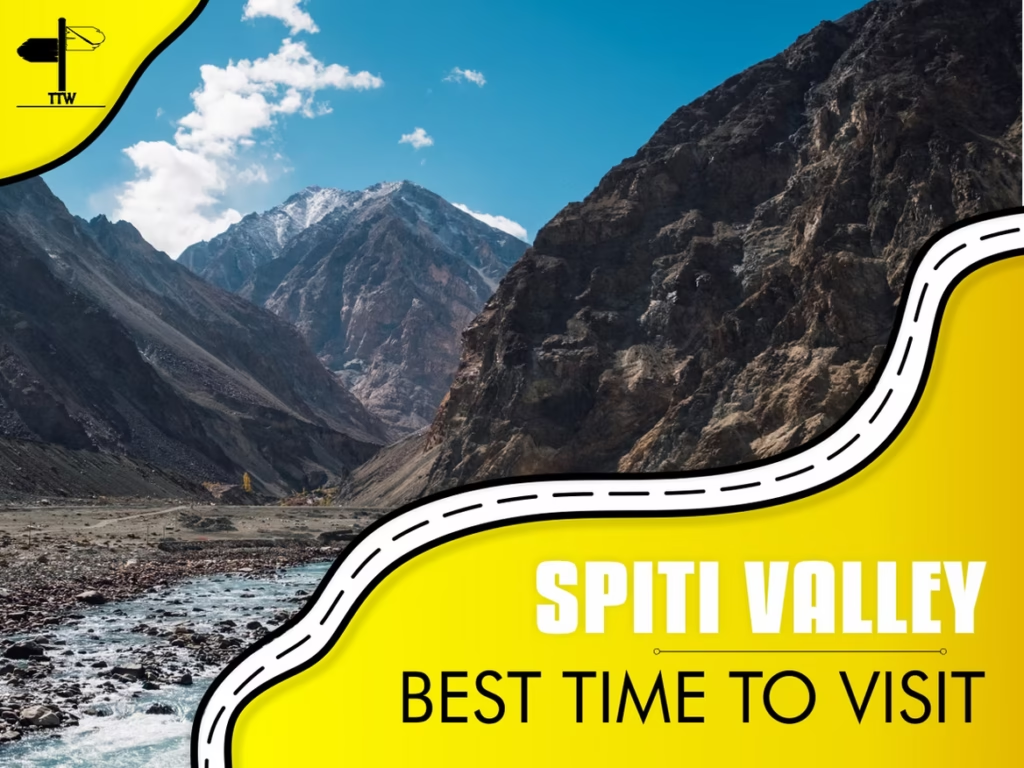
Some places on Earth are more than just places to go; they are trips to another world. One of these places is the Spiti Valley. This cold desert mountain valley is a piece of Tibet that has been cut off from the rest of India. It is in the far north-east of Himachal Pradesh. It’s a place of stark, breathtaking beauty, with ancient monasteries clinging to bare cliffs, clear blue rivers cutting through huge canyons, and a billion stars lighting up the night sky. If you’re not brave, you shouldn’t go to Spiti. The roads are hard to drive on, the altitude is hard to deal with, and the weather is bad. But for those who answer its call, the rewards are beyond measure. It’s an adventure that pushes you to your limits, a spiritual journey that calms your soul, and a cultural experience that opens your heart. The friendly people who live here, who have simple lives and warm smiles, are what make this valley special. Timing is the most important thing for a successful trip to the Spiti Valley. Picking the best time to visit Spiti Valley can make the difference between a great trip and a logistical nightmare. The weather here is very bad, and the high mountain passes that connect the two areas are only open for a few months each year. This is the most complete guide to planning the best trip to Spiti Valley. We’ll talk about everything, from the best time of year for your travel style to detailed itineraries, what to pack, how to budget, and all the things you need to do (and not do!). We have something for everyone, whether you’re looking for adventure, spirituality, or photography. A World Within a World: About Spiti Valley Credit: unsplash The name “Spiti” means “The Middle Land,” which is a perfect way to describe where it is between India and Tibet. It’s a cold desert at a high altitude, which means it doesn’t get much rain because the Himalayas block the monsoon clouds. This makes the area’s famous landscape: rocky, barren mountains in shades of brown, purple, and grey, with patches of green barley fields and the Spiti River’s shimmering turquoise. Tibetan Buddhism is the main religion in this area. There are some of the oldest and most important monasteries in the world in the valley. For more than a thousand years, there have been places where people can learn and grow spiritually. Life here is simple, hard, and very connected to nature and faith. A full breakdown of the best times to visit Spiti Valley by season Credit: freepik.com There isn’t one “best” time to visit Spiti; it all depends on what you want to do. The valley has a very different personality in each season. The best time to go is in the summer, from June to September This is the best time to visit Spiti Valley because it is the most popular and easiest to get to. The weather is perfect, and the whole Spiti circuit, even the high passes, is open. Weather: The temperature during the day is nice and warm, between 15°C and 25°C. A t-shirt and a light jacket are often enough to keep you warm. But the nights are still cold, with temperatures dropping to between 3°C and 7°C. Road Conditions: The highways from Manali to Kaza and from Shimla to Kaza are both open. There may be some water crossings from melting snow and occasional landslides caused by the monsoon on the roads leading up to the area (especially near Manali), but this is usually the safest time to go on a road trip. What to Look Forward To: Bright Landscapes: The valley is at its greenest right now, with lush barley fields making beautiful patches of colour against the dry mountains. Access: It’s easy to get to all of the monasteries, villages, and tourist spots, like the famous Chandratal Lake. Peak Crowds: This is the most crowded time of year, especially in June and July when Indian schools are out for summer break. There will be more tourists, and rooms can fill up quickly. Who Should Go in the Summer? This time of year is great for first-time visitors, families, and people who like the weather to be more pleasant. This is the best time to see and do everything the valley has to offer. Fall (from mid-September to October) is the best time for photographers Credit: freepik.com A lot of people who have been to Spiti Valley before say that this is the best time to go. The summer crowds are gone, the monsoon has passed, and the valley is now bathed in a magical golden light. The weather is nice and clear, with temperatures between 10°C and 20°C. But the nights get a lot colder, and they often go below freezing (0°C to -5°C). Road Conditions: The roads are mostly in great shape now that the monsoon rains have stopped. But there is a small but real chance that the Kunzum Pass (on the Manali route) will close after the first week of October due to an early snowfall. What You Should Expect: The valley turns into a canvas of fall colours that are stunning. After the harvest, the poplar and willow trees turn a bright yellow, and the fields turn a golden brown. Fewer Tourists: You’ll have the beautiful scenery and old monasteries all to yourself. Clear Skies: The air after the monsoon is very clear, giving you the best views of the snow-covered peaks and the stars at night. Who Should Come in the Fall? This time of year is great for photographers, people looking for peace, and experienced travellers who don’t mind the cold and want to see the valley at its most beautiful and peaceful. Winter (November to April) is the best time for an adventure Credit: pexels.com Not everyone can go to Spiti in the winter. It is a very extreme adventure that needs a lot
Travel for Taste: India’s Best Foodie Destinations for Authentic Regional Cuisines
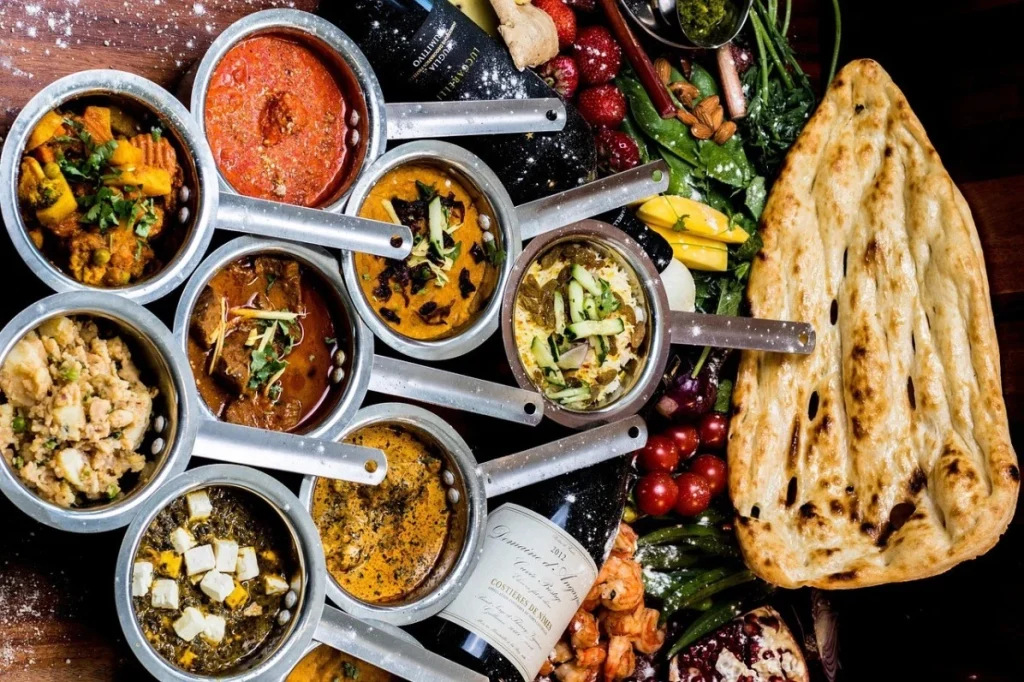
India is a mosaic of flavors, scents, and culinary traditions woven throughout its many states; it is more than just a nation. If “eat where the locals eat” is your motto when traveling, you’re in for a delicious adventure. Planning your Indian culinary trip in 2025 allows you to arrange your foodie travel itinerary according to your preferences, from Kerala’s seafood to Bengal’s sweets. This guide will highlight festivals and cuisine, offer the best travel itineraries, examine India’s most popular foodie destinations, and offer expert advice to make your culinary adventure enjoyable, safe, and unforgettable. Popular Foodie Indian Destinations To Travel in 2025: 1. North Indian Classics: Delhi, Lucknow & Amritsar The northern region of India is a veritable gold mine for those who enjoy rich gravies, kebabs, and hearty breads. Delhi (Old Delhi & Chandni Chowk) Try kebabs, spicy chaat, Banta-style jalebis, and parathas at Paranthe Wali Gali. Take a food walk in the morning; the aroma of freshly made chole and puris begins to fill the air before the sun rises. Pro Tip: Street frying oil can splash onto your fingers, so always have a small piece of tissue and a wet wipe with you. Lucknow (Awadhi cuisine) Taste slow-cooked biryani in the dum style, galouti kebab, and kakori kebab. Recently, Lucknow was chosen to be a Gastronomic Creative City by UNESCO. Visit the old city stalls and try the royal shakarkandi (sweet potato) chaat. Pro Tip: Many royal kitchens prepare fresh food for the evening crowd, so visit between 5 and 8 p.m. Amritsar (Punjabi & Sikh culinary heritage) Stuffed kulchas, chole, lassi, and langar at the Golden Temple (simple, soulful). Try the plain, cheese, and egg varieties of Kulcha King at the city’s chowk. Pro Tip: Go early in the morning for a langar experience; there will be fewer people and more time for introspection. 2. West India & Konkan Coast: Goa, Mumbai, Konkan The western Indian coastal cuisine is a hotspot for tropical flavors, from seafood to curries flavored with coconut. Goa & Konkan region (Malvani cuisine) Try the Goan fish curry, kokum-based drinks, prawn xacuti, and sol kadhi. Coconut is used in many different ways in Malvani cooking. Join a toddy shop feast at dusk, which consists of spicy food and local drinks. Pro Tip: Request “the house fish” from the locals; smaller, fresher catch frequently tastes better than menu items. Mumbai (Street food capital) The streets are lined with stands selling sandwiches, bhel puri, pav bhaji, and vada pav. Near the Marine Drive, sample the seafood “cutting chai & bun maska” combos. Pro Tip: The freshest plates are served by street vendors during the busiest lunch/dinner hours. Gujarat & Rajasthan (Vegetarian & spice-rich) Try the Gujarati dishes dhokla, fafda, and thepla; in Rajasthan, try the dal baati churma and laal maas.Try the Mirchi Bada and Mawa Kachori in Jodhpur. Pro Tip: Look for thali meals off of the main streets; you’ll frequently find hidden dishes and better value for your money there. 3. South India: Kerala, Tamil Nadu & Karnataka Here, the main ingredients are rice, coconut, and spices. Kerala (Malabar, Cochin, South Kerala) Kerala Sadya (banana leaf lunch), Thalassery-style Malabar biryani (Thalassery style), and meen pollichathu (banana leaf-wrapped fish) are not to be missed.Visit the neighborhood toddy shop and try the toddy + spicy fish snack combo. Pro Tip: Southern cuisine is frequently hotter than what the menu indicates, so proceed with caution when ordering spicy. Tamil Nadu Tamil Nadu cuisine includes Kongunadu dishes, filter kaapi, idli-dosa, and Chettinad chicken curry. The unique highlight is the jiggery-sweet Kuzhi Paniyaram, which is served at temple stalls. Pro Tip: If you’re health conscious, request a version with “less oil/ghee” because many dishes are heavy. Karnataka Mysorean fish curry, Coorg pork, and Mysore masala dosa are the best cuisine. A unique highlight is visiting temple kitchens in Udupi to sample sattvic, no-onion, no-garlic dishes. Pro Tip: Keep a small first aid kit for acidity because South Indian cuisine can be tangy. 4. East India & Himalayan Flavors: Bengal, Assam, Sikkim Teas, sweets, and ingredients with a mountain theme are available in these areas. West Bengal & Kolkata Misti doi, rosogolla, puchka (a variation of pani puri), and macher jhol are found in West Bengal and Kolkata. Enjoy your cha (tea) with a Kathi roll on College Street by dusk. Pro Tip: Try sweets in the morning .Since sweets are fresher in the morning and stores sell out quickly by the mid-day. Assam & Northeast Try the jadoh, apong (rice beer), bamboo shoot pickle, and fish tika. Pro Tip: Try regional cuisine at Assamese or Meghalayan homestays. Northeastern cuisine can surprise many visitors, so always inquire if the dish is spicy. Himalayan regions (Sikkim, Uttarakhand) Himalayan cuisine, including paik (pancake), momos, gyapa khatsa (spicy cheese), and thukpa (Sikkim, Uttarakhand).Try chang and butter tea in Sikkim’s monasteries. Pro Tip: Your flavor threshold may change at high elevations, so you may need more salt or seasoning than normal. Food Festivals & Events It can enhance your experience to plan your trip around food celebrations. Bangalore Restaurant Week (Bengaluru) – a carefully planned celebration that features chef menus and discounts. Pro Tip: Many well-known restaurants sell out of their participating slots, so make your reservations well in advance. State Tourism Food Fests – Kerala’s Onam Sadya feasts, the Tamil Nadu Mango Festival, and the Goa Food & Art Festival. Pro Tip: Dates may change, so check the state tourism calendars six months in advance. Local fairs & night markets – Examples include Kolkata’s Adda lanes during Durga Puja and Indore’s Sarafa Bazaar, a nighttime food market. Pro Tip: Keep small change on hand because many street vendors do not accept digital payments. Suggested Food Travel Itinerary “Regional Deep Dive” for one week : Select a region, such as South India. Day 1: Chennai arrival & street snacks Day 2: Food tour of Madurai and Chettinad Day 3: Coimbatore → Munnar — local dishes Day 4: Kochi —
13 Best Instagram-Worthy Travel Spots in India (The Tarzan Way)
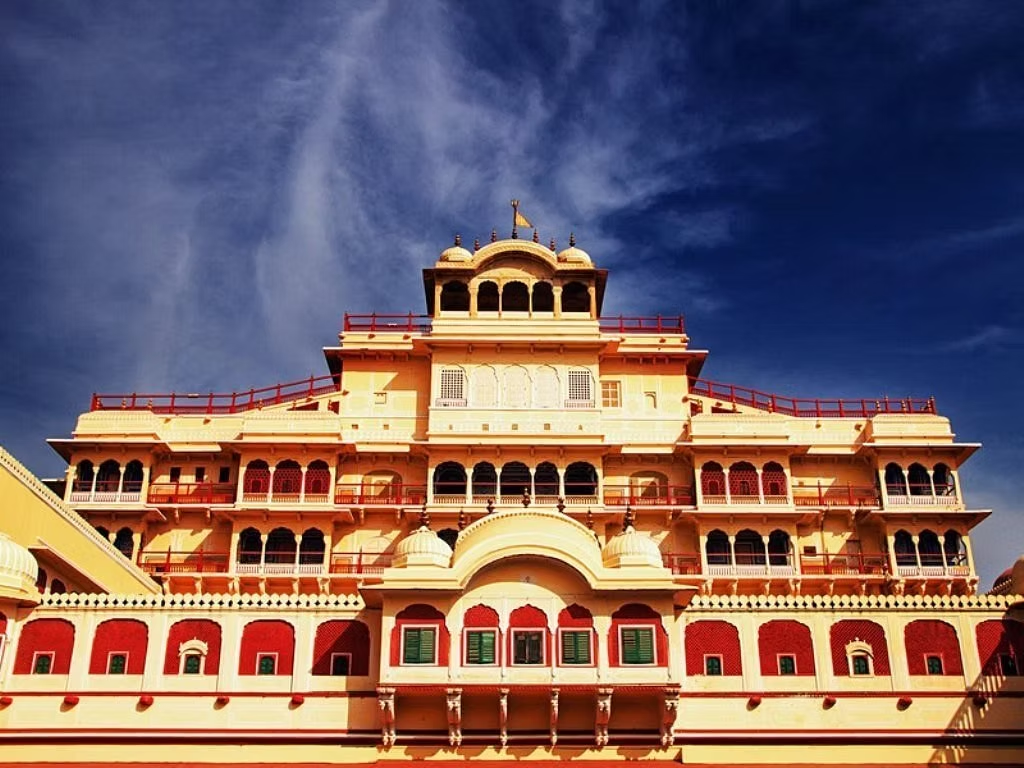
A picture can tell a story and be shared with the whole world in a matter of seconds on social media. For travelers, this means finding those beautiful places that not only take your breath away but also make for the best pictures. India is a photographer’s and traveler’s dream because of its amazing variety of landscapes, colors, and cultures. There are so many beautiful places just waiting to be photographed, from snowy mountains and huge deserts to old ruins and colorful cities. But where do you even start with all of these choices? We’ve made a list of the best places in India to take pictures for your next vacation. This isn’t just a list of nice places; it’s your guide to getting the perfect shot that will make your followers want to go. Let’s get started! 1. The City Palace in Jaipur: The Royal Doors Image by Trip Advisor There are many great places to take pictures at the City Palace in Jaipur, but the four beautiful gates in the inner courtyard are the most famous. Each gate has a different season on it and is covered in bright colors and very detailed patterns. The Money Shot: A picture of a person in front of the green Leheriya Gate, which stands for spring. A beautiful picture that shows off the Peacock Gate’s many small details (which stand for fall). Pro Tip: This place is very popular, so you might have to wait in a short line to get a good picture of each door. Wait; it’s worth it to get a picture without other people in it! 2. Chamba Camp, Thiksey (Ladakh): A luxurious place to stay in the mountains Image by Trip Advisor The Chamba Camp in Thiksey is the best place to go for “glamping” (glamorous camping) with a view that looks like it came straight out of a magazine. The beautiful Thiksey Monastery and the Himalayan mountains are behind these luxury tents. The Money Shot: A picture of your fancy tent with the beautiful Thiksey Monastery in the background. A picture of the beautiful mountains taken from your own outdoor seating area. Pro Tip: This is a seasonal camp, so it’s usually open from May to October. Make your reservations well in advance because it’s a very popular and exclusive event. 3. The Backwaters in Alleppey, Kerala Image by Pick Your Trail The calm backwaters of Alleppey, which is also known as the “Venice of the East,” are very well-known. You have to take a ride on a traditional houseboat to see palm trees, small villages, and beautiful green scenery. The Money Shot: A picture of a houseboat moving through calm waters from the deck. A picture of a local fisherman in his small canoe with a beautiful sunset behind him. Pro Tip: Stay on a houseboat for the night. The views at sunrise and sunset are the most beautiful and give the best light for pictures. 4. The Tea Gardens in Munnar, Kerala Image by Holidify There are endless rolling hills of perfectly manicured tea plantations all over the hill station of Munnar. The tea bushes’ straight lines against the misty mountains make for a beautiful and calm scene. The Money Shot: A wide shot of the green tea valleys that shows how big they are. A picture of you or your friends walking along the narrow paths between the tea plants. Pro Tip: A lot of tea gardens have set places for taking pictures. To get a more unique picture, ask your driver to take you to a viewpoint that isn’t as busy. 5. Valley of Flowers in Uttarakhand: A Colorful Carpet Image by Veena World This place looks like it came straight out of a storybook. During the monsoon season, the Valley of Flowers National Park is full of hundreds of different kinds of colorful flowers. The Money Shot: A wide shot of the valley that shows how many different kinds of flowers there are and how thick they are. A close-up of a rare and lovely flower, like the hard-to-find Blue Poppy. Pro Tip: The valley is only open from June to October, so keep that in mind. The best time to see the flowers in full bloom is from mid-July to mid-August. 6. The White Desert in Gujarat’s Rann of Kutch Image by Country Holidays Inn and Suites The Rann of Kutch is the biggest salt desert in the world. In the winter, it becomes a huge, strange landscape of white salt crystals that goes on forever. The Money Shot: A picture taken at sunset, when the pink and orange colors of the sky are reflected in the white sand. A creative shot that plays with perspective because the flat, empty landscape makes for fun photo tricks. Pro Tip: Go during the Rann Utsav festival, which happens from November to February most years. The bright cultural events and fancy tents make for great photo opportunities. 7. Dal Lake in Kashmir: Heaven on Earth Image by Wion Dal Lake in Srinagar is like a painting come to life. The calm blue water perfectly reflects the huge Himalayan mountains. The colorful shikaras (traditional boats) make it even more beautiful. The Money Shot: A picture taken while riding a shikara with the beautiful mountains in the background. A colorful picture of the flower and vegetable market that floats in the early morning. Pro Tip: Go in late July or August to see the lake’s famous lotus flowers in full bloom. This will make your photos even more beautiful. 8. The Blue City: Jodhpur, Rajasthan Image by Trip Savvy The old city of Jodhpur is known for the thousands of houses that are painted a beautiful shade of blue. The best place to see this is from the top of the huge Mehrangarh Fort, which has a stunning view of the blue sea of houses below. The Money Shot: A wide-angle picture of the blue houses from the top of Mehrangarh Fort. A
Best Time to Visit Singapore for Festivals & Events
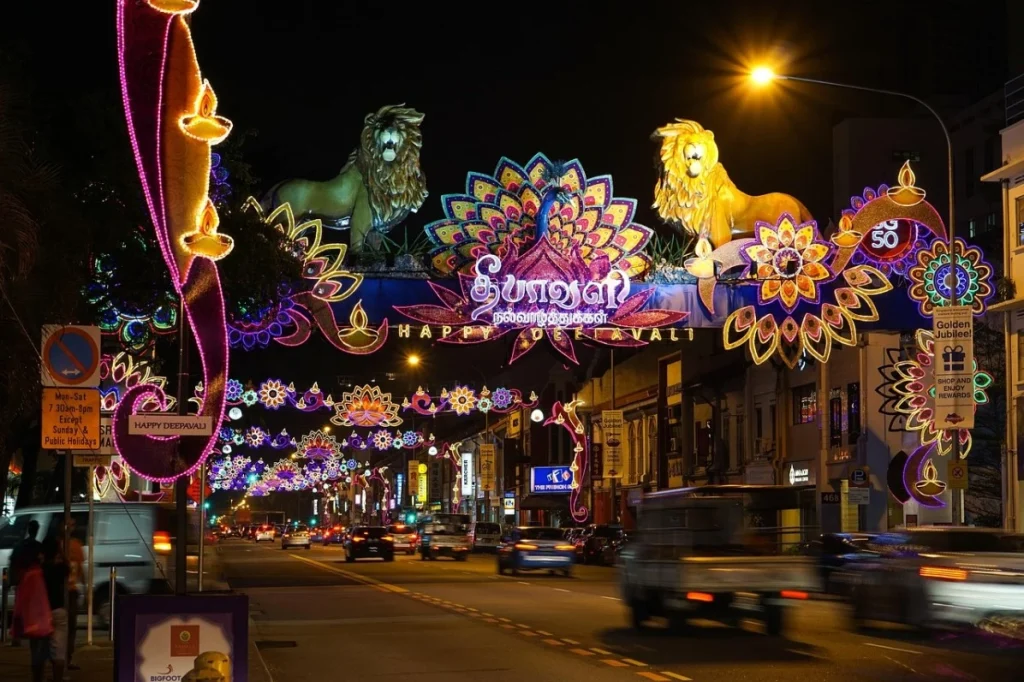
Singapore is one of those places teeming with life, with a little of everything for visitors all year round; a tiny island bursting with color, energy, and celebration every single month. From the spectacular street parades and celebratory cultural feasts to the international music festivals and mega shopping carnivals, Singapore never tires. But of course, the question travelers always want to know is — “When is the best time to visit Singapore?” The ‘best time’ will depend entirely on what kind of experience you are wanting to have. Whether that means immersing yourself in the glow of Chinese lanterns, or tasting your way through hawker stalls at the food festival, or dancing with revelers under fireworks on New Year’s Eve, we walk you through the best seasons and events that will have you planning your trip to Singapore with ease. And if planning your trip sounds like too much work, The Tarzan Way will make this effortless. It will help you build smart, experience-driven travel plans based on what you love, so you can concentrate on enjoying Singapore and not worrying about the logistics. Understanding Singapore’s Seasons Compared to many other countries of the world, Singapore does not really have four seasons; it has a tropical climate, which means it is warm and humid throughout the year. The average temperatures range between 25°C and 32°C, and it tends to rain briefly on occasion. There are two monsoon seasons: Northeast Monsoon (Dec–Mar): This typically produces more rain, and generally contains cooler winds. Southwest Monsoon (Jun–Sep): This typically produces lighter rains and breezy weeks. So, if you plan on going on a trip purely based on the weather, the best time to go out and experience all the sights is from February to April when the rain recedes, the skies clear up, and all the outdoor events commence. Pro Tip: Always take with you a random light rain jacket or umbrella — the rain can always be unpredictable, yet usually rather short-lived. You’d be surprised how many Singaporeans wait in their favorite cafés and malls to let the rain cease before making their return back outside. Major Festivals & Events Month by Month January–March: Cultural & New Year Festivities If you revel in vibrant traditions, these months are a sensory overload. The city turns into a sea of red and gold with Chinese New Year; Chinatown comes alive with lion dances, lanterns, and street food. The Chingay Parade is one of Asia’s largest street performances and takes over the city with floats, dancers, and costumes covered in sequins and electronics flashing lights. For a deeper look into a cultural experience there is Thaipusam, a Hindu festival where devotees carry ornate structures called kavadis in a spiritual act of devotion. It is often intense, spiritual and uniquely Singaporean. If you’re a first-time visitor, this period gives you a rich taste of the island’s multicultural energy. You can dive deeper into the city’s cultural neighborhoods with this detailed Singapore Travel Guide 2025 – Everything First-Time Visitors Need to Know. April–June: The Food & Shopping Lovers’ Season In April, the city exchanges the traditional festival atmosphere for a more gluttonous experience. This is the time when the Singapore Food Festival stages itself — a historic experience for any foodie. With amazing pop-up stalls, hawkers selling delicious food, Michelin-rated food events, and creative culinary learning experiences, you’ll be able to taste fare representing just about every corner of Asia, as well as the dishes you must try, such as laksa, chili crab, and satay. At the same time, The Great Singapore Sale takes over the malls and shopping districts. Orchard Road, Bugis, and Marina Bay become a shopping paradise filled with unending offers and deep discounts on luxury brands, electronics, and fashion. It’s also a great time for travelers looking for budget-friendly Singapore travel packages. You can find curated options here — Book Singapore Experiential Travel Packages Under $1000. Pro Tip: Combine the food festival with your shopping spree — hop between hawker stalls during the day and night markets for souvenirs in the evening. July–September: Music, Lights & National Pride If you would like to see the energetic side of Singapore, this is a great time to visit. In August, we have National Day, where the nation comes together in red and white with art shows, fireworks, and a sense of national pride. The celebration is in its finest form at Marina Bay with an exhilarating atmosphere. Next is the Singapore Night Festival, a creative extravaganza that transforms the Bras Basah-Bugis district into an outdoor gallery of visual art in the form of projections, performances, and immersive experiences. Also, September is when the Singapore Grand Prix happens, one of the great night races in Formula 1. Even if you are not a motor sport fan, you will love the concerts, parties, and energy of the occasion. Pro Tip: Hotels fill up quickly during the F1 season. Book early or stay in neighborhoods like Tiong Bahru or Katong for a quieter, authentic local experience. October–December: Festive Lights & Romantic Getaways This is possibly the most enchanting season of the year in Singapore. The month of October comes alive with Deepavali, where the streets of Little India are decorated with dazzling decorations, multicultural markets, and endless colorful sweet options. By November, Christmas on Orchard Street will turn the iconic boulevard into a glowing magical wonderland with lights, carols, and themed installations. Then, December will be the best month for couples, when the city is cozy and merry, and perfect for long romantic walks along the Marina Bay waterfront, or rooftop dinners with great views of the skyline. If you’re planning a couple’s escape, check out these Singapore Honeymoon Packages: Best Ideas & Itinerary for inspiration. Pro Tip: Visit during early December — you’ll catch both Deepavali lights and the Christmas charm without peak holiday crowds. Choosing the Best Time Based on Your Travel Style For Culture Seekers (Jan–Feb): Chinese New Year, Thaipusam, and Chingay Parade offer
The Complete Guide to Coorg: Discovering India’s Coffee Capital
Where Mist Meets Aromatic Plantations: An Introduction Imagine waking up on a cool, foggy morning with the strong, intoxicating smell of roasted coffee beans in the air. The soft sound of birds chirping adds to the peacefulness of the scene as rolling hills covered in many shades of green fade into a soft blanket of fog. This isn’t a dream; it’s just another morning in Coorg, which is known as the “Scotland of India.” Kodagu is the official name for this beautiful hill station in the Western Ghats of Karnataka. It is a place that soothes the soul and wakes up the spirit of adventure. Coorg is a great place for travellers who want to get away from everyday life. It has lush landscapes, waterfalls, exciting activities, and a rich, unique culture. This guide is meant to be your one-stop shop for everything you need to know about the coffee estates, the food, and the wild, untamed beauty of the area. We’ll go over everything you need to know to plan a trip that will be both relaxing and unforgettable. The Tarzan Way brings to life immersive storytelling journeys that let you really get to know Coorg’s culture and nature, making sure that your experience is both real and responsible. Are you ready to get lost in Coorg’s green paradise? Let’s start our trip to India’s coffee capital. Key Takeaways Coffee Paradise: Learn about Coorg’s identity as India’s coffee capital, including how to visit large estates, learn about the “bean to cup” process, and taste real coffee. Natural Wonders: Discover the breathtaking scenery of Coorg, from the grand Abbey and Iruppu Falls to the sweeping views from Raja’s Seat and Mandalpatti. Adventure Hub: Find out about exciting things to do, like white-water rafting on the Barapole River, climbing Tadiandamol (Coorg’s highest peak), and going on wildlife safaris in Nagarhole National Park. Explore the world of the Kodavas, the local warrior group, and learn about their unique culture and food. Enjoy unique foods like Pandi Curry and Kadumbuttu, and stay in a traditional homestay where you’ll be treated like family. Guide to Practical Planning: Get all the important details about when to go, how to get to Coorg, where to stay, and a sample itinerary to help you plan your trip. Travel Responsibly: Learn how to explore the Western Ghats in a way that protects its natural beauty for years to come. 1. The Heart of Coorg: Visiting Coffee Plantations That Smell Good Credit: Unsplash You can’t talk about Coorg without talking about its lifeblood: coffee. The Robusta and Arabica types of coffee grown in this area are among the best in India. Huge coffee estates cover the land, and tall silver oaks covered in pepper vines often cast shade over them. Coming here is a lesson in and of itself. Most plantations have guided tours where you can walk through the bushes, learn how to tell the difference between different beans, and see the whole process, from picking the ripe red berries to pulping, drying, and finally roasting them to perfection. The best part of the experience is the tasting, where you can enjoy the freshest cup of coffee you’ve ever had. Recommended Plantations: Tata Coffee Plantation Trails: Offers a “bean to cup” tour that is both luxurious and in-depth. Evolve Back (Orange County) is a high-end resort with its own plantations that lets you fully experience the area. Mercara Gold Estate and Dubare Elephant Camp: You can go on a coffee and spice tour and also get to know elephants. Advice for Travellers The coffee blossom season, which lasts from March to April, is magical because the estates are covered in sweet-smelling white flowers. The best time to see the plantations busy is during the harvest season, which runs from November to January. For the best taste and a fair price, buy your coffee straight from the estate. Quick Facts Arabica and Robusta are the two main types. The nickname is “Coffee Capital of India.” Paired Crop: Coffee and pepper vines are often grown together, with the same trees supporting both. 2. Chasing Waterfalls and Peaks Covered in Mist: Coorg’s Natural Wonders Credit: Unsplash The beauty of Coorg is raw, dramatic, and completely captivating. The Western Ghats’ rolling hills have given it stunning views and amazing waterfalls that come to life, especially during the monsoon season. Abbey Falls: This is one of Coorg’s most famous waterfalls and is close to Madikeri. Water from the Kaveri River flows down a rock face from a height of 70 feet into a calm pool. A bridge that hangs down gives you a great view. Iruppu Falls is a beautiful waterfall with many levels in the Brahmagiri Hill range. People also think of it as a holy place, and they think the water there has healing powers. Raja’s Seat: This beautiful garden in Madikeri was said to be the Kodagu kings’ favourite place to watch the sunset. It has amazing views of the misty valleys and rolling hills all around it. Mandalpatti is the best place to go for an adventurous, off-road jeep ride with 360-degree views of the Western Ghats. The view from the top, especially at sunrise, makes the bumpy ride worth it. Why does it draw tourists?? Because it’s nature at its most basic level. The powerful waterfalls, peaceful viewpoints, and lush greenery make this a great place to get away from it all and take pictures. 3. The Call of the Wild: Adventures with animals and hiking Credit: Unsplash The rough terrain and thick forests of Coorg make it a great place for people who want to have fun. There’s something for every thrill-seeker, whether you want to climb a mountain or see animals in the wild. Trekking: Coorg has some of the best trekking trails in Karnataka Tadiandamol is the highest peak in Coorg, rising 1,748 meters. The trek takes you through thick Shola forests and wide grasslands, and the views from the top are amazing. The
Best Vietnam Group Tours for Young Travelers
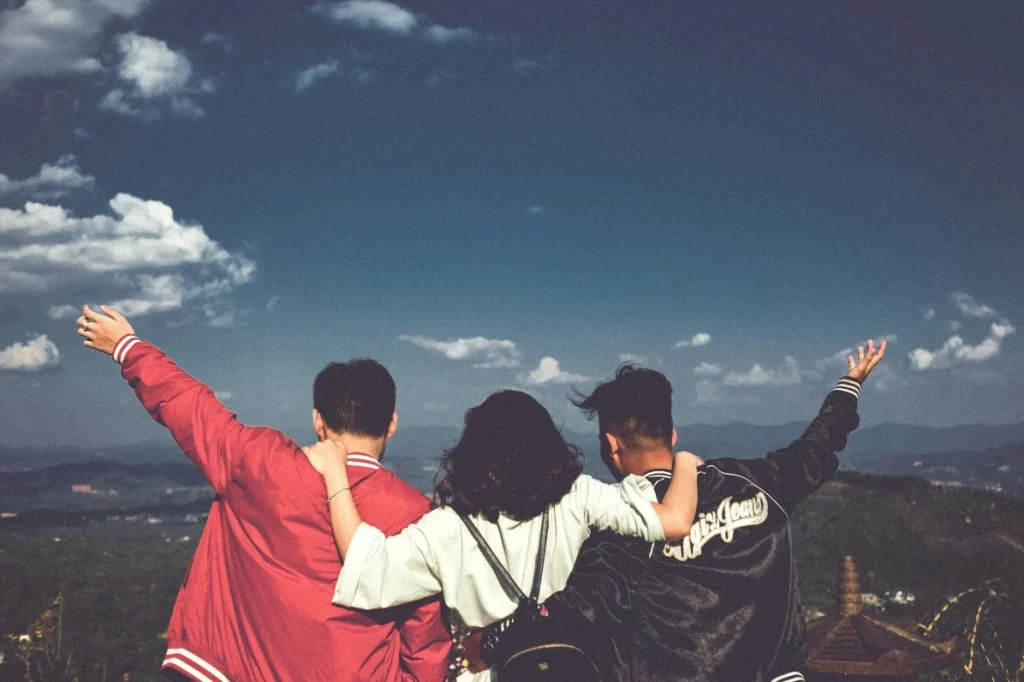
Vietnam is not just a destination – it’s a human connection experience. Between the night markets of Hanoi and the rice terraces of Sapa, there’s magic waiting to be explored at every corner of the country. And when travelers share those experiences with fellow wanderers, they become stories you will tell for the rest of your life. For youthful knowledgeable travelers who want some adventure, culture, and maybe a bit of chaos, Vietnam group tours perfectly balance independence and fun as you meet people from around the world, all there to experience the food, history, and hidden treasures that Vietnam has to offer. Whether you’re traveling alone or with some buddies, participating in a well-planned group journey means you can spare the strain of planning and get right to the fun of Vietnam – The Tarzan Way can offer simple customizable itineraries to best accommodate your vibe and budget. Why Vietnam is Perfect for Young Travelers Budget-Friendly Yet Experience-Rich You do not need a lot of money to have a pleasant visit to Vietnam. Food from street stalls can be as low as one dollar, local trains provide a great way to see scenery while also being inexpensive, and you can find hostels throughout the country that provide clean environments and a social scene for backpackers. A two-week trip to Vietnam for under $800, including accommodations, intercity travel, and tours, is easy – a small fraction of what you would spend in Europe or Japan. Vibrant Social Travel Culture Every major location in Vietnam – from Hanoi’s Old Quarter to Hoi An’s riverside bars – relies on social energy. Travelers connect over the same meals, the same hostel pub crawls, the same once-in-a-lifetime motorbike rides, and the same sleepless overnight trains. Most group tours are comprised of backpackers, students, and young professionals in the 18–35 demographic and come with built-in energy and casual atmosphere. Adventure at Every Turn Few countries present so much diversity in such a small package. You can take a trip to Ha Long Bay and cruise through limestone cliffs, trek through terraced rice fields in Sapa, explore caves in Phong Nha, and then party at the beaches in Phu Quoc – all in one trip. Top Group Tour Routes for Young Travelers 1. Northern Vietnam Explorer – Hanoi, Ninh Binh, Sapa & Ha Giang This area is the heart of Vietnam. This is the ideal destination for the adventurous types who appreciate rough nature, real culture, and scenic drives. Hanoi: Begin in the capital city among narrow streets full of scooters and food stalls. Make sure to try egg coffee and Bia Hoi nights with the locals. Ninh Binh (Tam Coc): Sometimes referred to as “Ha Long Bay on land,” Ninh Binh is a beautiful destination for boat rides through limestone karsts and golden rice fields. Sapa: Trekking through villages of different ethnic minorities such as Hmong and Red Dao; overnight homestays may provide an interesting angle to local life. Ha Giang Loop: The best motorbike trip ever! With winding roads around mountains and valleys by the Chinese border, this four-day ride may be one of the most picturesque rides in Asia. Most northern group tours last 7–10 days, offering a mix of trekking, homestays, and road trips with small, friendly groups. Pro Tip: Pack warm layers — mountain weather changes fast! Rent a motorbike with a guide for the Ha Giang Loop; it’s safer and way more fun. 2. Central Vietnam Adventure – Hue, Hoi An & Phong Nha In Central Vietnam, you’ll find ancient culture, stunning coastlines, and captivating caves. Hue: It was once an imperial capital and is home to royal tombs, temples, and the Perfume River. Hoi An: The most beautiful town in all Vietnam – famous for colorful lanterns that light the streets, many tailor shops, and restaurants along the river. Phong Nha-Ke Bang National Park: A playground for adventure seekers. Visit enormous caves like the Paradise Cave, or zipline into the Dark Cave and enjoy a mud bath inside! Most tours in the central region typically include cycling tours, caving activities, and beach parties, which can offer a nice combination of a relaxing vacation, and an adventure holiday. Pro Tip: Visit Hoi An’s Lantern Festival if your trip aligns — it’s magical. Book cave tours in advance, as Phong Nha’s adventure slots fill up quickly. 3. Southern Escape – Ho Chi Minh City, Mekong Delta & Phu Quoc The south is all about contrasts – bustling metropolises versus quiet rural areas. Ho Chi Minh City (Saigon): Experience the buzz of nightlife, rooftop bars, and historical locations like the Cu Chi Tunnels. Mekong Delta: Glide through floating markets, coconut farms, and stilt houses – the true essence of rural Vietnam. Phu Quoc Island: End your journey on the velvet beaches that rise out of the azure water. Swim, snorkel, kayak, and watch the sun drift into the ocean. Southern Vietnam group tours work for socially minded travelers focused on history and hedonism – visiting war museums during the day then going to bustling markets by night. Pro Tip: Try a night cruise on the Saigon River for skyline views. In the Mekong, start early to catch the floating markets before they close by noon. Offbeat & Themed Group Tours for the Curious Traveler Cultural Immersion Tours Live with local families in Mai Chau or Pu Luong, learn to cook pho in Hoi An, or join rice harvest festivals in the north. These tours are immersive, sustainable, and deeply meaningful. Adventure Expeditions Trek across remote highlands, camp under the stars, or kayak through Lan Ha Bay – a quieter and cleaner alternative to Ha Long Bay. Perfect for thrill-seekers. Food & Nightlife Tours From bun cha and banh mi to rooftop cocktails in Saigon, food tours in Vietnam are a sensory overload. Some tours even include cooking classes, bar crawls, and live music nights. Motorbike Road Trips The Ha Giang Loop and Hai Van Pass are legendary among bikers. Join a



